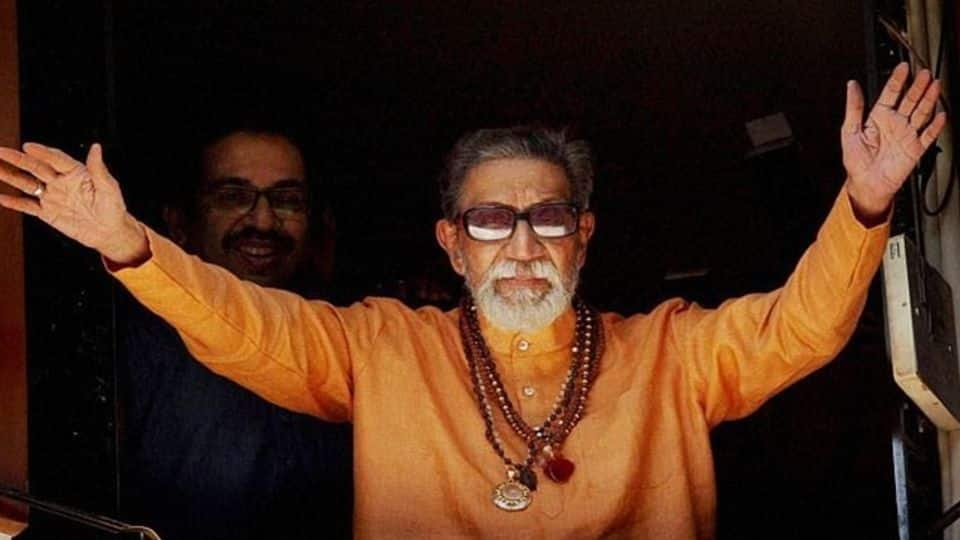
Balasaheb Thackeray: Remembering the tiger on his 92nd birth anniversary
What's the story
The charismatic and limelight-loving Balasaheb Thackeray was a "true-blue" celebrity. He manipulated the media, drew crowds, held power without responsibility and wielded fanatical influence. If he expressed displeasure over something, Mumbai and, at times, Maharashtra downed its shutters. However, his death left a fractured legacy, leading to Shiv Sena's rapid meltdown. On his 92nd birth anniversary, let's deconstruct what made Balasaheb Thackeray click.
Beginning
The cartoonist who veered towards politics
Balasaheb began his career as a cartoonist with the Free Press Journal and later started his own political satire weekly, Marmik. This formed the basis of his political party, the Shiv Sena, in 1966. Balasaheb's politics was influenced by his father Keshav Thackeray, a writer and social activist. He was also one of the leaders of the Samyukta Maharashtra movement demanding a separate Maharashtra.
Marathi cause
Maharashtra's "Godfather" who espoused the cause of the "Marathi manoos"
Balasaheb built his support base by appealing to Marathi pride. He published lists of non-Maharashtrians receiving employment in government and private establishments. He tauntingly titled these as "Read and ignore" to provoke neutral locals. Using his fiery oratory, Thackeray targeted South Indians and Gujaratis as "migrants." He decimated the left trade unions, with the party's Bhartiya Kamgar Sena pressurizing employers to employ Marathi-speaking workers.
Controversies
The tiger roared with notorious consequences
Under Balasaheb, Sena gained prominence and courted controversies in the 1990s. Due to their consistent agitation, Bombay was renamed Mumbai for Goddess Mumbadevi. But, what catapulted him to the national stage was Sena's purported role in the 1992-93 Mumbai riots. He allegedly said that he would be proud of Shiv Sainiks if they played a part in demolishing the Babri Masjid in 1992.
Do you know?
The "remote-control" of the Shiv Sena-BJP government of 1995-99
Though Thackeray never held an official post, he wielded enormous power. In 1995, when the Sena-BJP combine won Maharashtra Assembly elections, he installed Manohar Joshi as the CM. However, he allegedly boasted that he was the "remote-control" of the government.
Decline
But this is how the tiger's rhetoric died
However, without any particular ideology, pro-Marathi chauvinism and Hindutva nationalism began to wane. In 2002, a frail Balasaheb appointed his wildlife-photographer son Uddhav as his successor, over his media-savvy nephew Raj. A livid Raj left Sena and formed the Maharashtra Navnirman Sena along similar lines. Balasaheb groomed Uddhav but since his death in 2012, Sena has been tottering, in need of a new direction.
Personality
Thackeray's personality was a "baffling enigma"
Without any political position, Balasaheb's Sena was born on the street and thrived due to mindless action. Sainiks were as clueless as its leader. It survived because of the awe and fear that Thackeray inspired. But, his personality was confusing. The self-styled Hindu Hridaysamrat loved warm beer and cigars. He hosted Michael Jackson but campaigned against Valentine's Day. The Hitler-admirer instigated followers against Muslims.
Legacy
The man who left a "troubling legacy"
But, how will history remember Thackeray? Yes, he did inspire Marathi pride, but he also sowed the seeds of prejudice towards "outsiders." Though his rhetoric placed Maharashtra on the national stage, he couldn't provide a vision for the state or his party. As Sena breaks its alliance with long-standing ally BJP on Balasaheb's birth anniversary, will it live up to its founder's stature?